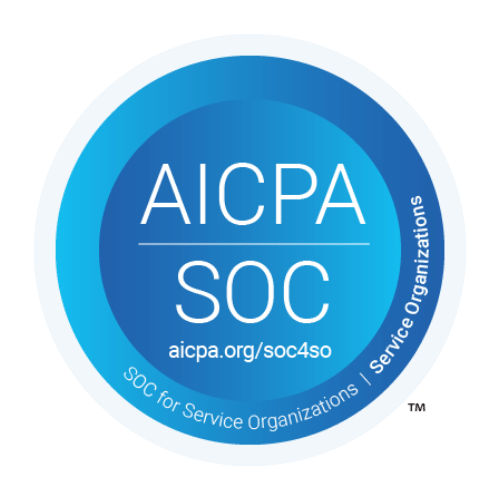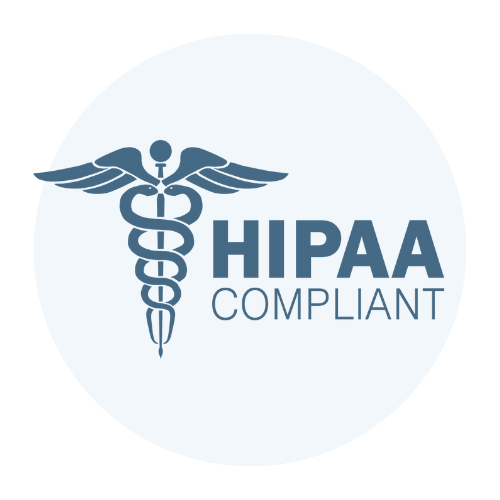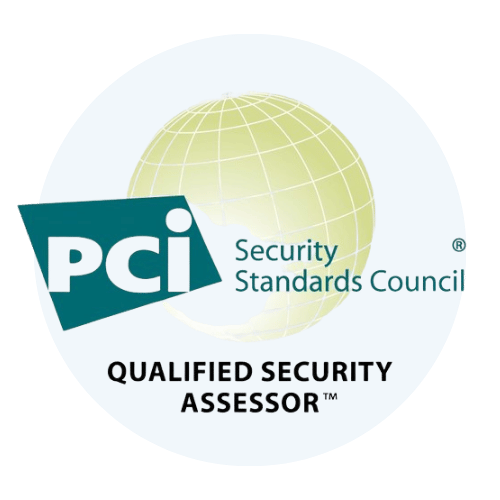Leveraging Compliance for Market Leadership

Blog [su_post] [/et_pb_text][et_pb_post_title author=”off” comments=”off” featured_image=”off” _builder_version=”4.21.2″ _module_preset=”default” title_font=”Hero New Regular|700|||||||” title_text_color=”gcid-905e3263-d1c0-445c-81b8-4da154a62fbe” title_font_size=”3em” title_line_height=”1.2em” title_font_size_tablet=”2.4em” title_font_size_phone=”2.2em” title_font_size_last_edited=”on|phone” global_colors_info=”{%22gcid-905e3263-d1c0-445c-81b8-4da154a62fbe%22:%91%22title_text_color%22%93}”][/et_pb_post_title][et_pb_image src=”https://trustnetinc.com/wp-content/uploads/2024/09/leveraging-compliance.jpg” alt=”compliance” title_text=”leveraging compliance” _builder_version=”4.25.0″ _module_preset=”default” border_radii=”on|10px|10px|10px|10px” global_colors_info=”{}”][/et_pb_image][et_pb_code _builder_version=”4.21.2″ _module_preset=”default” global_colors_info=”{}”] [/et_pb_code][et_pb_post_nav prev_text=”Previous Post” next_text=”Next Post” _builder_version=”4.21.2″ _module_preset=”default” title_font=”Hero New Regular|||on|||||” title_text_color=”gcid-c6a045ad-93f2-41aa-bea3-317846c80b16″ custom_padding=”8px|16px|8px|16px|true|true” border_radii=”on|8px|8px|8px|8px” border_width_all=”1px” border_color_all=”gcid-c6a045ad-93f2-41aa-bea3-317846c80b16″ global_colors_info=”{%22gcid-c6a045ad-93f2-41aa-bea3-317846c80b16%22:%91%22border_color_all%22,%22title_text_color%22%93}”][/et_pb_post_nav][et_pb_text quote_border_weight=”3px” quote_border_color=”gcid-c6a045ad-93f2-41aa-bea3-317846c80b16″ _builder_version=”4.25.0″ _module_preset=”default” text_font=”Hero New Regular|300|||||||” text_text_color=”gcid-f90447ab-4baa-4389-a89e-9e109c0034c2″ text_font_size=”16px” text_line_height=”1.9em” ul_line_height=”1.6em” quote_line_height=”2em” header_font=”Hero New Regular|700|||||||” header_2_line_height=”1.7em” header_4_line_height=”1.6em” custom_margin=”2em||||false|false” global_colors_info=”{%22gcid-f90447ab-4baa-4389-a89e-9e109c0034c2%22:%91%22text_text_color%22%93,%22gcid-c6a045ad-93f2-41aa-bea3-317846c80b16%22:%91%22quote_border_color%22%93}”] In a fast-paced business environment, compliance has evolved from a mere regulatory requirement to a strategic asset that can propel companies to market leadership. As businesses navigate the complexities of modern regulations and rising customer expectations, implementing strong compliance programs becomes essential. These programs not only ensure adherence to legal standards but also build customer trust by protecting data privacy and enhancing cybersecurity. By integrating effective compliance solutions, businesses can improve their performance and stand out in a crowded marketplace, turning compliance into a competitive edge. The Impact of Compliance on Brand Reputation Effective compliance practices not only ensure that companies meet regulatory requirements but also enhance their credibility and earn the trust of customers and stakeholders. Enhancing Brand Trust and Credibility Data Privacy and Cybersecurity: Implementing robust compliance solutions that prioritize data privacy and cybersecurity is essential for building customer trust. Customers expect their personal information to be protected, and a company’s commitment to safeguarding this data can significantly enhance its reputation. Ethical Business Practices: Compliance goes beyond legal obligations. It involves ethical business practices and transparent operations. Companies that adhere to these principles are often viewed as more reliable and trustworthy, which can differentiate them in a crowded market. Customer Trust as a Business Driver: Trust is a critical component of business performance. When customers trust a brand, they are more likely to remain loyal, recommend the brand to others, and increase their engagement. Strong compliance practices are foundational in fostering this trust. The Dangers of Non-Compliance Reputational Damage: Non-compliance can lead to severe consequences, including legal penalties and financial losses. More damaging, however, is the negative impact on brand reputation. News of non-compliance can spread quickly in today’s digital age, leading to a loss of consumer confidence. Customer Loss: Customers are increasingly aware of the importance of data privacy and are quick to switch to competitors if they feel their information is not secure. Non-compliance in this area can result in significant customer attrition. Financial Implications: Beyond reputational harm, non-compliance can directly impact a company’s financial health. The costs associated with legal fines and the loss of customers can be substantial, affecting overall business performance. Investing in a comprehensive compliance strategy not only protects businesses from legal and financial repercussions but also cultivates a reputation of trust and integrity. Request a quotetoday for more information on our comprehensive compliance services. Building Customer Trust Through Compliance A strong compliance framework not only fulfills legal obligations but also signals a company’s dedication to transparency and data protection. Commitment to Transparency and Data Protection Transparency as a Trust Builder: By adopting transparent compliance practices, companies can openly communicate their data handling processes. This transparency reassures customers that their information is managed responsibly and ethically, fostering a sense of trust. Robust Data Privacy Measures: Implementing advanced compliance solutions that prioritize data privacy and cybersecurity helps companies protect sensitive customer information. Ensuring data is secure from breaches and unauthorized access demonstrates a company’s commitment to safeguarding customer interests. Ethical Standards and Practices: Compliance also involves adhering to ethical standards in business operations. Companies that consistently uphold these standards are perceived as trustworthy, making them more attractive to discerning consumers. Customer Trust as a Catalyst for Loyalty and Referrals Enhanced Customer Loyalty: Trust is a cornerstone of customer loyalty. When customers feel confident that a company is committed to protecting their data, they are more likely to remain loyal, even in the face of competitive alternatives. This loyalty translates into long-term business performance benefits. Increased Referrals: Satisfied customers who trust a brand are more inclined to recommend it to others. Word-of-mouth referrals are powerful, as they are often rooted in personal experiences and trust. By maintaining robust compliance practices, companies can leverage customer trust to expand their customer base through referrals. Sustainable Business Growth: Building and maintaining customer trust through compliance not only enhances loyalty and referrals but also contributes to sustainable business growth. As trust levels increase, so does customer engagement, resulting in improved business performance. Demonstrating a commitment to transparency and data protection, not only enhances brand reputation but also supports long-term business success. Compliance as a Differentiator in the Market A well-structured compliance program not only ensures adherence to regulations but also distinguishes a business from its competitors, offering unique advantages that contribute to market leadership. Setting Businesses Apart through Compliance Competitive Advantage: Implementing comprehensive compliance solutions gives businesses a competitive edge. By demonstrating a commitment to ethical standards and regulatory requirements, companies can build a reputation for reliability and integrity. This can be particularly appealing in industries where trust and transparency are critical, such as finance or healthcare. Market Differentiation: In markets saturated with similar offerings, compliance can be a key factor that sets a business apart. Companies that invest in robust compliance programs are often perceived as more professional and forward-thinking, which can attract customers who prioritize security and ethical practices. Enhanced Business Performance: Strong compliance practices can lead to improved business performance by mitigating risks associated with legal penalties and reputational damage. This proactive approach not only safeguards the company’s assets but also enhances operational efficiency and stakeholder confidence. Compliance as a Key Selling Point Product and Service Assurance: When compliance is integrated into product development and service delivery, it becomes a compelling selling point. Customers are more likely to choose products that adhere to strict compliance standards, as it assures them of quality, safety, and reliability. Building Customer Confidence: Highlighting compliance efforts in marketing materials can boost customer confidence. By showcasing certifications, audits, and compliance achievements, businesses can reassure potential customers about their commitment to excellence and ethical practices. Attracting New
Future-Proof Your Business: Mastering Proactive Compliance Strategies

Businesses today are confronted with an intricate web of compliance requirements that continue to grow in complexity. As regulations become more stringent and multifaceted, the need for strategic and proactive compliance measures has never been greater. By adopting forward-thinking compliance strategies, organizations can not only navigate these challenges with precision but also position themselves for sustained business success. Proactive compliance is not merely a defensive measure; it is an essential catalyst for long-term business resilience and growth. The Challenges of Dynamic Compliance With a seemingly endless stream of new rules and amendments, staying ahead is both a strategic necessity and a significant challenge. The dynamic nature of regulations requires businesses to be vigilant and responsive, often demanding considerable resources and expertise. Here are some of the key difficulties faced in maintaining proactive compliance: Rapid Regulatory Changes Laws and regulations can change with little notice, often influenced by political, economic, or social factors. This unpredictability requires businesses to constantly update their compliance strategies to meet new demands. Complexity and Volume The sheer number of regulations, each with its own set of requirements, can overwhelm even the most prepared organizations. Understanding and interpreting these complex regulations often requires specialized knowledge and dedicated personnel. Resource Intensiveness Keeping up with regulatory changes demands time, money, and human resources. Smaller businesses, in particular, may struggle to allocate the necessary resources to maintain proactive compliance. Failing to address these challenges can lead to significant risks, including: — Fines and Penalties Non-compliance can result in steep financial penalties, which can severely impact a company’s bottom line. For example, on average, financial penalties for HIPAA violations can range from $127 to $250,000 depending on the nature of the HIPAA violation. Another example is PCI DSS compliance. The average penalties can range from $5,000 to $100,000 per month until compliance is achieved. These fines vary based on the volume of transactions processed and the level of non-compliance. — Reputational Damage The consequences for a company’s reputation are profound. As consumer trust erodes, businesses may experience a loss of customers who seek out competitors perceived as more reliable or ethical. This shift can lead to a significant decline in sales as the tarnished brand struggles to maintain its market position. Long-term, the damage can linger, affecting brand loyalty and making it challenging to attract new clientele. — Operational Disruptions Operational disruptions caused by non-compliance can significantly impede a company’s ability to function effectively. When a business fails to meet regulatory standards, it often faces immediate scrutiny through investigations and audits, which can divert crucial resources and attention away from daily operations. This can result in a backlog of tasks, project delays, and a noticeable dip in overall productivity as teams redirect their focus to addressing compliance issues. Understanding these challenges is the first step toward developing robust strategies that transform compliance from a daunting task into a competitive advantage. Request a quotetoday for more information on our comprehensive compliance services. The Role of Predictive Analytics and Risk Assessment Predictive analytics and risk assessment tools have emerged as essential resources for businesses aiming to navigate these complexities effectively. By leveraging these advanced technologies, companies can anticipate regulatory changes and identify potential risks before they materialize. Predictive analytics utilizes data-driven techniques to forecast future trends and patterns. For organizations, this means having the capability to: Anticipate Regulatory Changes By analyzing historical data and current trends, predictive analytics can provide insights into potential regulatory adjustments, allowing businesses to prepare and adapt strategies accordingly. Identify Potential Risks Through sophisticated models, these tools assess various operational and regulatory scenarios, highlighting areas of potential vulnerability and enabling preemptive action. Benefits of Proactive Risk Management Reduced Costs: By identifying risks early, organizations can minimize the financial impact of non-compliance, avoiding hefty fines and penalties. Additionally, early detection allows for more cost-effective solutions rather than reactive measures. Improved Efficiency: Streamlined risk assessment processes offer enhanced operational efficiency. Businesses can allocate resources more effectively, focusing on areas that require immediate attention and reducing the time spent on crisis management. Enhanced Customer Trust: Proactively managing risks and demonstrating a commitment to compliance can significantly boost customer confidence. When clients see that an organization is diligent about safeguarding their interests, it fosters long-term loyalty and trust. Incorporating predictive analytics and risk assessment into organizational strategies is not merely a defensive move but a forward-thinking approach that ensures resilience and competitiveness in a dynamic regulatory environment. TrustNet’s Expertise in Proactive Compliance With extensive experience and a robust suite of tools and methodologies, TrustNet ensures that clients not only meet compliance requirements but exceed them with confidence. — Comprehensive Audit Lifecycle Management TrustNet expertly manages the entire audit lifecycle year-round, ensuring that clients are always prepared for upcoming audits. By pre-certifying controls before audits begin, TrustNet minimizes disruptions and streamlines the audit process. Our capability to handle information requests and manage external audits further alleviates the compliance burden on businesses, allowing them to focus on their core operations. — Breaking Down Risk Silos One of TrustNet’s significant strengths lies in our ability to dismantle risk silos, preventing redundant activities that can drain resources. By identifying, assessing, and managing risks in alignment with a company’s core mission and objectives, TrustNet creates a cohesive compliance strategy that enhances organizational resilience. — Accelerated Compliance with Advanced Tools TrustNet accelerates compliance adoption through its best-in-class frameworks, control libraries, and automated evidence-collection processes. Their pre-certification audit-readiness assessments ensure that businesses are always prepared, while dedicated compliance experts optimize tasks by organizing, automating, and monitoring compliance activities effectively. — Real-Time Monitoring and Reporting With TrustNet, companies gain access to real-time dashboards that monitor risk, security, and compliance posture, offering a transparent view of their compliance status. Custom reports showcase progress and facilitate clear communication with company executives, emphasizing the importance and impact of security and compliance initiatives. TrustNet’s expertise not only simplifies compliance but also strengthens an organization’s ability to navigate an evolving regulatory landscape. Case Studies Here are compelling examples of how TrustNet’s proactive compliance solutions have
Mastering HIPAA Compliance: A Comprehensive Guide

The Health Insurance Portability and Accountability Act (HIPAA) is a pivotal piece of legislation designed to protect sensitive patient information from being disclosed without consent. Enforced by the Department of Health and Human Services, HIPAA plays a crucial role in safeguarding patient privacy, underscoring why it is important for healthcare organizations to adhere strictly to its standards. Compliance not only helps avoid hefty HIPAA violation penalties but also ensures that the HIPAA minimum necessary rule is applied, limiting the use of patient data to the strictest extent necessary. Central to achieving compliance is the HIPAA security risk assessment, which helps organizations identify potential vulnerabilities and implement robust security measures. This guide will explore how to become HIPAA compliant, ensuring that patient information remains safe and secure. Who Enforces HIPAA and What Are the Penalties? The enforcement of HIPAA falls under the jurisdiction of the Office for Civil Rights (OCR) within the Department of Health and Human Services. The OCR is tasked with ensuring that healthcare organizations comply with HIPAA regulations to protect patient privacy and data security. Types of HIPAA Violations HIPAA violations can be categorized into three main types: Civil Violations: These occur when a covered entity inadvertently discloses Protected Health Information (PHI) without malicious intent. Criminal Violations: These involve intentional misuse of PHI, such as selling patient information for personal gain. Administrative Violations: These are procedural lapses, such as failure to conduct a HIPAA security risk assessment or not implementing adequate security measures. Penalties for HIPAA Violations Depending on the degree of culpability, HIPAA violations carry civil monetary penalties of $137 to $68,928 per violation. Intentional violations may also result in fines and even jail time under criminal sanctions. Corrective measures could be necessary in addition to monetary fines to resolve noncompliance. Additionally, state attorneys general may file civil lawsuits that result in monetary damages. Furthermore, in order to bring policies and processes up to the HIPAA-mandated standards, covered companies might need to develop a corrective action plan. Real-World Examples of HIPAA Breaches Aveanna Health: In 2019, this pediatric home care provider fell victim to a phishing attack, compromising employee email accounts and exposing sensitive information such as social security numbers and health data. The breach affected approximately 5,000 individuals, demonstrating the critical need for robust cybersecurity measures. Elite Dental Associates: In Dallas, Texas, a breach occurred when the practice disclosed patients’ PHI in response to online reviews. This negligence resulted in a $10,000 fine and highlighted the importance of adhering to HIPAA and ensuring proper training on PHI disclosures. These examples illustrate why HIPAA is important and emphasize the necessity of understanding how to become HIPAA compliant. For more on our HIPAA Compliance services, Click Here Understanding HIPAA: Key Components To effectively navigate HIPAA compliance, it’s essential to understand its key elements. Here’s a breakdown of the fundamental components: Protected Health Information (PHI): Encompasses any health-related information linked to an individual. Includes medical records, billing details, and patient-provider conversations. Ensures confidentiality and security in healthcare interactions. The Omnibus Rule: Enacted in 2013 in response to the Genetic Information Nondiscrimination Act (GINA) and the Health Information Technology for Economic and Clinical Health Act (HITECH) Act. The Omnibus Rule modifies the prior HIPAA regulations to enhance security and confidentiality when data is shared amongst healthcare providers. Strengthens patient rights, enhancing access to their information and restricting data use in marketing. Minimum Necessary Rule: Requires entities to limit PHI access to the minimum necessary for the intended purpose. Aims to protect patient data from unnecessary exposure and breaches. Enhances data security within healthcare organizations. Business Associate Agreement (BAA): A contract between a HIPAA-covered entity and a business associate. Outlines responsibilities for safeguarding PHI. Ensures business associates implement safeguards to prevent unauthorized use or disclosure. These components are vital for healthcare entities to ensure the protection of sensitive patient information and maintain compliance with HIPAA regulations. Conducting a HIPAA Security Risk Assessment A HIPAA security risk assessment is an essential procedure that helps healthcare organizations evaluate their systems and practices to ensure compliance with HIPAA regulations. Steps Involved in Conducting a Risk Assessment: 1. Identify Potential Threats and Vulnerabilities: Begin by cataloging all systems and processes that handle PHI. Assess potential threats, such as unauthorized access, data breaches, and natural disasters. 2. Analyze Current Security Measures Review existing security policies and practices for gaps and weaknesses. Determine if current measures are adequate or need enhancement. 3. Evaluate Risk Levels: Assign risk levels to identified vulnerabilities based on the potential impact on PHI. Prioritize risks to address the most critical ones first. 4. Implement Safeguards: Develop and integrate necessary security measures to mitigate identified risks. Use a HIPAA BAA template to ensure all business associates are contractually obligated to protect PHI. 5. Document and Review: Maintain thorough documentation of the assessment process and findings. Regularly review and update the risk assessment to adapt to new threats and changes in the organization. Importance of Identifying Vulnerabilities and Threats Identifying vulnerabilities and threats is crucial as it enables organizations to proactively address potential security gaps. This process not only ensures compliance with HIPAA but also protects the organization from costly data breaches and loss of patient trust. Benefits of Using Risk Assessment Tools and Software — Efficiency and Accuracy: Automated HIPAA compliance tools streamline the assessment process, allowing for quicker and more accurate identification of risks. — Comprehensive Analysis: Software solutions provide detailed analyses and reports, making it easier to understand vulnerabilities and their potential impacts. — Continuous Monitoring: Many tools offer continuous monitoring capabilities, ensuring that organizations remain compliant as new threats emerge. Conducting a HIPAA security risk assessment is a vital step in understanding how to become HIPAA compliant. By leveraging automated tools and templates, healthcare organizations can enhance their security posture and ensure the ongoing protection of sensitive patient information Talk to our experts today! Achieving HIPAA Compliance Achieving HIPAA compliance is a critical goal for healthcare organizations aiming to protect patient privacy and data security. A comprehensive compliance
Understanding PCI DSS: Who Needs It and How to Achieve Compliance

The Payment Card Industry Data Security Standard (PCI DSS) is a comprehensive set of security requirements designed to safeguard credit card information during processing, storage, and transmission. Adhering to PCI DSS compliance is essential for businesses to protect cardholder data and maintain customer trust. Understanding the scope of PCI DSS is crucial, as it defines which systems and processes must adhere to these stringent security requirements. This article delves into who needs PCI DSS compliance and provides a roadmap to achieving it, highlighting the role of PCI DSS software and other tools in facilitating compliance. Who Needs to Comply with PCI DSS? In payment card transactions, several key entities play distinct roles. Understanding these roles is crucial for comprehending who must adhere to the PCI DSS: Merchant: This is any business or organization that accepts payment cards, such as American Express, Discover, JCB, MasterCard, or Visa, in exchange for goods or services. Merchants include a wide array of entities, from traditional retail stores to online shops, universities, and even government agencies. Acquirer: is a financial institution that processes credit or debit card payments on behalf of the merchant. Acquirers are responsible for ensuring that merchants meet PCI DSS compliance requirements. Processor: These entities handle the transaction data from the merchant to the acquirer. Processors ensure that payment information is securely transmitted and can include companies like PayPal or Square. Issuer: The issuer is the bank or financial institution that provides the cardholder with their credit or debit card. Issuers are responsible for ensuring that the cardholder’s data is protected and for facilitating the transaction’s approval or denial. Who Must Comply with PCI DSS? PCI DSS compliance is mandatory for all entities involved in storing, processing, or transmitting cardholder data. This requirement ensures that payment information is protected at every stage of the transaction process. The following entities must comply: Merchants at all levels, regardless of the number of transactions processed annually. Service Providers that process, store, or transmit cardholder data on behalf of other businesses. Issuers and Acquirers that manage and facilitate card transactions and merchant services. Processors that handle card transaction data between merchants and acquirers. Cardholder Data Environment (CDE) The Cardholder Data Environment (CDE) encompasses the people, processes, and technologies that store, process, or transmit cardholder data or authentication data. The scope of PCI DSS compliance is determined by the extent of the CDE. Here’s what you need to know: The CDE includes all system components, network devices, and applications involved in cardholder data storage, processing, or transmission. Entities must identify and document all parts of their infrastructure that fall within the CDE to ensure comprehensive security measures are applied. By segmenting networks and reducing the scope of the CDE, businesses can simplify their PCI DSS compliance efforts and focus on protecting the most critical areas. For more on our PCI DSS services, Click Here The Importance of PCI DSS Compliance Failing to adhere to PCI DSS guidelines can lead to severe repercussions for any business involved in processing, storing, or transmitting cardholder data. The potential consequences include: Fines and Penalties: Non-compliance can result in substantial fines, ranging from $5000 – to $50,000, which is variable and does not include legal and settlement amounts. These fines can escalate based on the severity and duration of non-compliance. Legal Repercussions: Businesses may face lawsuits and legal penalties if a data breach occurs due to non-compliance. Legal fees, settlements, and damages can be financially devastating. Loss of Business: Non-compliance can lead to the termination of the business relationship with acquiring banks and payment processors. Additionally, customers may lose trust in a business that fails to protect their data properly. Enhancing Security Posture Implementing PCI DSS standards goes beyond mere compliance; it significantly enhances the overall security posture of an organization. Here’s how it helps: Comprehensive Security Measures: PCI DSS provides a robust framework for securing cardholder data. Utilizing PCI DSS tools ensures that businesses adopt best practices for data protection. Risk Mitigation: By adhering to these standards, businesses can reduce the risk of data breaches, which can be costly and damaging to the organization’s reputation. Continuous Monitoring: PCI DSS requires continuous monitoring and testing of networks to maintain security. This proactive approach helps in identifying and addressing vulnerabilities before they can be exploited. Benefits of Customer Trust and Confidence Achieving and maintaining PCI DSS compliance can have a profound impact on customer trust and confidence: Increased Customer Confidence: Customers are more likely to trust businesses that demonstrate a commitment to protecting their payment data. This trust can translate into higher customer loyalty and repeat business. Competitive Advantage: Being PCI compliant can set a business apart from competitors. It signals to customers that the business prioritizes data security and is dedicated to safeguarding their information. Reputation Management: A strong security posture helps in maintaining a positive reputation. In an age where data breaches are prevalent, being known as a secure and trustworthy business can significantly enhance brand image. Steps to Achieve PCI DSS Compliance Achieving PCI DSS compliance involves several critical steps, which ensure that the organization meets the required security standards. Here’s a general roadmap to guide you through the process: — Risk Assessment Conduct a thorough risk assessment to identify vulnerabilities within your systems that handle cardholder data. Determine the scope of your PCI DSS compliance by identifying all systems, people, and processes involved in cardholder data storage, processing, or transmission. — Network Security Implement robust firewall configurations to protect cardholder data. Ensure that default passwords and other security settings on system components are changed to unique. — Data Protection Encrypt cardholder data during storage and transmission across open, public networks to prevent unauthorized access. — Access Control Assign a unique ID to each person with computer access to cardholder data, ensuring that access is tracked and monitored Maintain a secure environment by using strong access control measures to restrict access to cardholder data. Restrict physical access to cardholder data by limiting access to systems and devices that store
Simplifying Compliance: Innovation through Automation
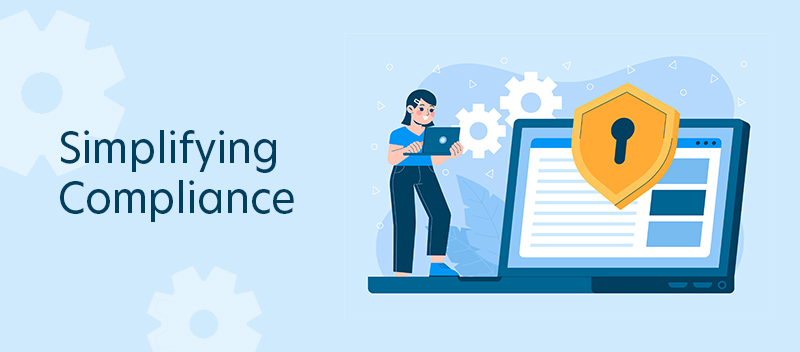
Managed compliance can be daunting in a fast-paced regulatory environment. TrustNet, a leader in cybersecurity and compliance solutions, understands these challenges and offers innovative tools to simplify them. Navigating complex regulations requires precision, and automated solutions are proving invaluable for this task. By leveraging automation, organizations can streamline compliance efforts, significantly reduce manual workload, and ensure accuracy. This approach is particularly beneficial for compliance officers, risk managers, IT professionals, and business leaders who are responsible for maintaining regulatory compliance effectively and efficiently. Challenges of Manual Compliance Navigating the intricacies of regulatory compliance manually is fraught with challenges that can significantly impact an organization’s efficiency and risk profile. Here are some key obstacles that highlight the drawbacks of traditional compliance methods: — Time-Intensive Processes Manual compliance involves laborious tasks such as extensive paperwork, meticulous documentation, and repetitive data entry. These activities consume valuable time and resources, diverting attention from strategic business priorities. — Susceptibility to Human Error With manual processes, the probability of errors increases. Mistakes in data handling, documentation, or reporting can lead to compliance breaches, which might result in severe repercussions. — Rapidly Changing Regulations The regulatory landscape is constantly evolving. Keeping up with these changes manually is both challenging and risky. Missing a regulation update can lead to inadvertent non-compliance. — Lack of Real-Time Monitoring Manual systems often fail to provide timely insights. This lack of real-time data can hinder decision-making and prevent organizations from taking proactive measures to mitigate compliance risks. — Significant Risk of Non-Compliance The stakes are exceptionally high when it comes to regulatory compliance. Non-compliance can result in severe penalties, including financial fines, legal actions, and reputational damage, jeopardizing an organization’s future. As the regulatory environment becomes more complex, organizations must adopt efficient tools to safeguard against the severe consequences of non-compliance. For more information on our comprehensive compliance services,Request a Quote Today How TrustNet’s Automated Solutions Can Help TrustNet’s automated solutions stand out for efficiency and reliability. Here’s how these cutting-edge tools can transform your compliance approach: Streamline Compliance Processes TrustNet simplifies complex compliance tasks, enabling organizations to automate routine workflows. This streamlining allows for faster processing times and reduces the bottlenecks often associated with manual operations. Reduce Manual Effort and Errors By minimizing the need for manual data entry and documentation, TrustNet’s automation solutions significantly cut down on human error. This reduction not only enhances accuracy but also ensures that your compliance activities are consistently reliable. Ensure Ongoing Compliance with Regulations TrustNet’s solutions are designed to keep pace with the latest regulatory changes, automatically updating processes to maintain compliance. This proactive approach helps organizations avoid non-compliance penalties and stay ahead in the regulatory game. Improve Efficiency and Productivity By automating tedious tasks, TrustNet allows your team to focus on strategic initiatives rather than getting bogged down by compliance minutiae. This shift boosts overall productivity and allows for better resource allocation. Enhance Data Security and Access TrustNet provides robust data security measures, ensuring sensitive information is always protected. Additionally, its centralized platform offers easy access to compliance data, facilitating quick decision-making and enhancing transparency across the organization. TrustNet’s automated solutions not only address the core challenges of manual compliance but also offer a comprehensive framework for maintaining robust compliance standards. Key Features of TrustNet’s Automated Compliance Platform TrustNet’s compliance management platform is revolutionizing how organizations manage compliance by leveraging the power of automation. Key features include: Real-Time Monitoring and Alerts: TrustNet provides continuous monitoring of compliance activities, ensuring that any deviations are immediately flagged. Automated Data Collection and Analysis: The platform automates the gathering and analysis of compliance-related data, eliminating the tedious manual processes. Customizable Workflows and Reporting: TrustNet’s platform allows for the customization of workflows to meet specific organizational needs. Integration with Existing Systems: TrustNet seamlessly integrates with an organization’s IT infrastructure, ensuring a smooth transition to automated compliance management. Expert Support and Guidance: The platform offers access to compliance specialists who provide strategic guidance, helping businesses navigate complex regulatory landscapes and optimize their compliance strategies. By incorporating these features, TrustNet’s automated compliance platform empowers organizations to streamline their compliance efforts, reduce manual intervention, and maintain a proactive stance in the ever-evolving regulatory environment. Case Studies TrustNet’s automated compliance solutions have been instrumental in transforming the operational landscapes of various organizations, ensuring heightened security and regulatory adherence. Here are notable examples: Canda Solutions: Fast-Tracking the Audit Process Recognizing the critical role of SOC 2 compliance in safeguarding client data, Canda Solutions embarked on a mission to meet stringent oversight standards. To navigate the intricate SOC 2 Type 2 audit landscape, they partnered with TrustNet. TrustNet’s expertise proved invaluable in accelerating the audit process. We conducted a thorough examination of Canda Solutions’ internal controls, ensuring alignment with AICPA requirements. TrustNet’s streamlined audit procedures helped expedite the process while maintaining rigor, highlighting the power of their automated compliance solutions in facilitating efficient and effective audits. Calendly: Fortifying Cybersecurity Defenses Amid rising cyber threats, Calendly, a globally recognized CRM and scheduling platform, sought to reinforce its cybersecurity framework to protect sensitive customer data. TrustNet implemented critical security protocols, including NIST risk assessments, HIPAA compliance, SOC 2 standards, and ISO 27001 frameworks. Our automated solutions significantly enhanced Calendly’s cybersecurity posture, leading to improved customer trust and compliance with industry regulations. This proactive approach not only boosted customer confidence but also attracted new business opportunities by demonstrating Calendly’s commitment to data security and compliance. In both cases, TrustNet’s automated compliance solutions pivotally strengthened organizational defenses and ensured regulatory compliance. Unlock Efficiency and Assurance with TrustNet TrustNet’s automated compliance solutions stand out by significantly enhancing operational efficiency and security. By reducing manual oversight and ensuring continuous compliance, TrustNet empowers organizations to focus on their core objectives with confidence. To experience the transformative impact of these solutions, we invite you to learn more and request a demo with TrustNet today. Simplify compliance and reduce risk with TrustNet’s automated solutions. Contact Us for a free consultation.
Real-Time Risk Visibility: Protect Your Business with Our Advanced Monitoring

As cyber threats become increasingly sophisticated, protecting sensitive customer data and the ecosystems in which it resides is paramount. TrustNet stands at the forefront of this vital mission, offering advanced risk monitoring solutions that ensure round-the-clock threat detection, mitigation, and prevention. By adopting a monitoring-as-a-service model, businesses can trust that their assets are guarded by TrustNet’s team of experts. Our experts leverage cutting-edge technologies to maintain compliance with industry regulations like HIPAA, PCI DSS, and more. Our team is dedicated to providing actionable insights, enabling organizations to understand the current threat landscape, prepare for future challenges, and seamlessly integrate with their existing systems. The Criticality of Real-Time Risk Visibility By employing advanced monitoring systems, businesses can detect potential issues like data breaches or system vulnerabilities before they escalate into significant problems. This early detection is crucial in mitigating risks and ensuring the security of sensitive information. Examples of Proactive Risk Management Early Detection of Data Breaches: Real-time monitoring systems can identify unusual patterns of data access, signaling a potential breach. This allows organizations to intervene swiftly, preventing unauthorized data extraction. System Vulnerability Identification: Continuous monitoring can reveal weaknesses in software or hardware that could be exploited by cybercriminals. Addressing these vulnerabilities promptly can protect against future attacks. Consequences of Delayed or Insufficient Risk Detection Failing to identify risks promptly can lead to severe repercussions: Financial Losses: Prolonged exposure to threats can result in significant financial damage, either through direct theft or the cost of remediation efforts. Reputational Damage: A publicized data breach can erode customer trust and damage a company’s reputation, leading to long-term impacts on customer loyalty and brand image. Regulatory Penalties: Non-compliance with industry regulations, such as HIPAA or PCI DSS, due to insufficient risk management can result in hefty fines and legal challenges. Staying Ahead of Emerging Threats As threat landscapes shift, businesses must adapt their strategies to stay ahead: Continuous Monitoring: Implementing systems that constantly monitor your network ensures that new threats are identified and addressed immediately. Adaptation to New Risks: Staying informed about emerging threats allows organizations to update their security measures proactively, safeguarding against future challenges. Employee Training and Awareness: Regular training sessions and updates on the latest threats empower employees to recognize and respond to potential risks effectively. For more on our advanced security monitoring services, Click Here TrustNet’s Advanced Monitoring Capabilities TrustNet offers an exceptional suite of risk-monitoring solutions designed to provide businesses with comprehensive security visibility. Our platform integrates essential security tools that streamline and enhance threat detection, incident response, and compliance management, all managed from a single, cohesive interface. Key Features of TrustNet’s Solutions Security Event Management: Our system continuously monitors all security events, ensuring that the most critical issues are prioritized and addressed promptly. Event Correlation: By linking each security event with relevant data on assets, vulnerabilities, intrusions, and remediation actions, TrustNet provides a comprehensive overview of your security environment. Security Intelligence: Equipped with advanced security intelligence, our platform consolidates all necessary information in one place, giving our analysts the complete picture needed to protect your organization. Integrated Security Tools: Our all-in-one platform includes SIEM/event correlation, asset discovery and inventory, vulnerability assessment, intrusion detection, and NetFlow monitoring. Threat Intelligence: With access to one of the world’s leading threat research teams, TrustNet delivers actionable intelligence and a real-time view of emerging threats and malicious actors. Benefits of Early Detection and Prevention Improved Security Posture: By utilizing real-time monitoring and comprehensive security tools, organizations can significantly enhance their overall security stance. Faster Incident Response: Early detection allows for swift intervention, minimizing the impact of potential security incidents. Reduced Risk of Breaches: By identifying vulnerabilities and threats early, TrustNet helps prevent unauthorized access and data breaches. Enhanced Compliance: Our platform simplifies compliance management, ensuring that your business adheres to key industry regulations and standards. Cost Savings: Proactive threat management and efficient incident response reduce the financial impact of security breaches and associated recovery efforts. TrustNet’s advanced monitoring capabilities empower businesses to stay ahead of threats and maintain a secure, resilient environment, supporting growth and operational stability. Use Cases for Real-Time Risk Monitoring Here are notable examples of how real-time monitoring is applied effectively: Cybersecurity: Detects unauthorized access and data breaches instantly, allowing for immediate defensive measures. Compliance Management: Tracks activities against regulations in real-time, ensuring quick rectification of any compliance issues. Fraud Prevention: Identifies and halts fraudulent transactions promptly, protecting financial institutions and customers. Healthcare: Monitors patient data continuously for timely medical interventions, improving patient care and outcomes. Manufacturing: Oversees production processes to quickly resolve issues, maintaining product quality and minimizing downtime. Real-time risk monitoring empowers organizations to maintain operational integrity, enhances decision-making, and ensures a proactive approach to risk management, ultimately supporting sustainable growth and resilience in an ever-evolving landscape. The TrustNet Advantage TrustNet stands out as the premier choice for mid-size and large organizations across diverse industries. Our comprehensive suite of managed security, consulting, and compliance solutions is designed to foster trusted relationships with customers, partners, and employees and ensure the utmost security and integrity of your business operations. Why Choose TrustNet? Comprehensive Solutions: Unlike other providers, TrustNet offers a one-stop shop for all your security needs, integrating managed services, consulting, and compliance solutions under one roof. Proven Expertise: With over a decade of experience, our team comprises highly skilled professionals who are adept across numerous industries and technical platforms, delivering unmatched expertise and insights. Global Reach: Headquartered in Atlanta, Georgia, TrustNet serves clients globally, including regions such as Africa, Asia, Australia, Europe, the Middle East, North America, and South America, ensuring a wide-reaching impact. Unique Methodology: Our proprietary TrustNavigator™ project methodology, refined over thousands of hours of projects, guarantees flexibility, efficiency, and the highest quality of deliverables. Commitment to Trust: Trust is at the core of our business. We are committed to being a reliable partner, integrating trust into every aspect of our company, and ensuring you can depend on us completely. Scalability and Flexibility: TrustNet’s platform is scalable and flexible, adapting to the evolving needs of both
TrustNet: The Ultimate Solution for Compliance Excellence
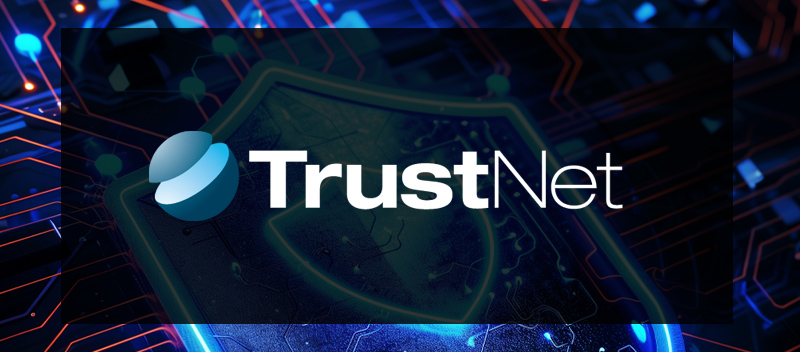
Maintaining compliance with ever-evolving regulations is a daunting challenge for many organizations. Compliance officers, risk managers, IT professionals, and business leaders face the intricate task of managing regulatory compliance, staying abreast of regulatory changes, managing risk, and avoiding costly penalties. TrustNet’s cutting-edge compliance management platform is the ideal solution to these challenges. With our innovative features, such as real-time monitoring, automation, and comprehensive risk assessment capabilities, TrustNet streamlines compliance processes, reduces the risk of non-compliance, and offers peace of mind, empowering organizations to focus on their core operations. Understanding Compliance Chaos In the dynamic business world, compliance management is a complex endeavor that challenges organizations worldwide. Here are some of the key complexities involved: Diverse Regulatory Frameworks: Businesses often operate across multiple jurisdictions, each with its own set of compliance requirements. For instance, healthcare organizations must adhere to HIPAA regulations in the U.S., while companies handling personal data in Europe must comply with the GDPR. This diversity necessitates a deep understanding of various legal landscapes, making compliance a formidable challenge. Frequent Regulatory Changes: The pace at which regulations like HIPAA and GDPR evolve requires businesses to stay agile and informed. Regular updates mean that compliance processes must be adaptable, ensuring that organizations can quickly align with new requirements without disrupting operations. Resource Allocation: Many organizations face constraints in dedicating sufficient resources to compliance, increasing the likelihood of oversight and errors. The complexity of managing compliance across different frameworks can strain resources, necessitating strategic allocation to mitigate risks. The impact of non-compliance, on the other hand, can be profound and far-reaching: Financial Penalties: Hefty fines are a common consequence of non-compliance, which can severely affect a company’s bottom line and financial health. Reputational Impact: Trust and reliability are cornerstones of any business. Non-compliance can tarnish an organization’s reputation, leading to a loss of customer confidence and loyalty. Operational Challenges: Addressing compliance issues often requires significant time and resources, diverting attention from core business activities and hindering productivity. Legal Consequences: Non-compliance can lead to severe legal repercussions, including lawsuits and, in extreme cases, business closures. Legal battles not only incur substantial costs but can also disrupt operations and damage long-term business viability. By effectively managing these complexities, businesses can safeguard against the detrimental effects of non-compliance, ensuring they remain focused on growth and success. For more on our compliance management platform, Click Here Accelerate Compliance with Real-Time Monitoring TrustNet’s state-of-the-art compliance management platform provides cutting-edge real-time monitoring capabilities, empowering businesses to stay ahead of potential issues and ensure continuous compliance. Here’s how TrustNet makes compliance management more efficient and effective: — Comprehensive Dashboards With TrustNet, you can oversee your risk, security, and compliance posture at a glance. The intuitive dashboards offer a holistic view of your organization’s compliance status, enabling you to quickly identify areas that need attention. — Immediate Alerts and Updates TrustNet’s platform ensures you are always in the loop with real-time alerts and updates. This immediate feedback allows you to swiftly address any compliance issues as they arise, minimizing the risk of penalties or reputational damage. — Custom Reports Demonstrating compliance progress is crucial for internal and external stakeholders. TrustNet’s custom reporting features allow you to generate detailed reports that highlight your compliance journey, showcasing improvements and pinpointing areas for further development. — Effective Communication Tools Keeping company executives informed about security and compliance efforts is essential. TrustNet facilitates clear and effective communication by providing tools that translate complex compliance data into understandable insights, helping executives appreciate the importance of these initiatives. By leveraging TrustNet’s real-time monitoring capabilities, organizations can transform their compliance management strategy, ensuring they remain proactive rather than reactive. Streamlining Processes with Automation TrustNet’s compliance management platform is designed to harness the power of automation, transforming how organizations handle compliance tasks and significantly reducing the manual workload. Key features of TrustNet’s automation capabilities include: 1. Workflow Optimization TrustNet’s platform enhances workflow efficiency by automating routine compliance tasks. This optimization ensures that each step in the compliance process is seamlessly linked, minimizing delays and miscommunications. 2. Control Mapping With automation, TrustNet makes it easier to map controls to compliance requirements and interrelated controls. This organized approach ensures that all regulatory demands are met comprehensively and accurately. 3. Control Implementation and Monitoring The platform automates the implementation of controls, ensuring they are applied consistently across the organization. Continuous monitoring through automation allows for real-time adjustments and updates, maintaining compliance without constant manual oversight. 4. Evidence Collection and Testing Gathering evidence and testing compliance measures can be time-consuming and prone to errors. TrustNet automates these processes, ensuring that evidence is collected systematically, and tests are conducted thoroughly, reducing the risk of human error. In a nutshell, automation allows teams to focus on strategic decision-making rather than being bogged down by repetitive tasks. This shift not only saves time but also enhances the overall effectiveness of compliance management strategies. Comprehensive Risk Assessment Capabilities TrustNet’s approach to risk assessment begins with dismantling risk silos, thereby avoiding unnecessary redundancies and streamlining processes across the organization. Here are some highlights of TrustNet’s risk assessment capabilities: Holistic Risk Identification TrustNet enables risk owners from various functions and business units to comprehensively document their risks and corresponding risk treatment plans. This collective approach allows organizations to capture a complete picture of potential threats. Prioritized Risk Management With TrustNet, organizational leaders can effectively prioritize risk management activities. Customized risk scoring criteria provide a nuanced understanding of risk severity and likelihood, enabling targeted and informed decision-making. Control and Mitigation Analysis The platform facilitates the connection between controls and specific risks, helping to evaluate how much of a risk has been mitigated by existing controls versus the residual risk that remains. This analysis is crucial for understanding the effectiveness of current strategies and identifying areas needing improvement. Strategic Insights for Leadership TrustNet offers leadership teams valuable insights into the management of risks and the prioritization of risk mitigation activities. This transparency ensures that leaders are always informed and able to support proactive risk management. By leveraging these
Mastering Compliance: A Framework for Managing Risk and Third-Party Relationships

In today’s intricate regulatory landscape, mastering compliance is paramount for businesses striving to maintain integrity and avoid legal pitfalls. Compliance frameworks and industry standards serve as the backbone for organizations to develop robust security compliance management systems. These frameworks not only guide companies in adhering to legal requirements but also offer risk management strategy examples crucial for navigating potential threats. A pivotal aspect of this landscape is a third-party risk management policy, which addresses the vulnerabilities introduced by external partnerships. By incorporating data governance metrics, businesses can ensure comprehensive oversight and enhance their overall compliance strategy, safeguarding their operations and reputation. Understanding Compliance Frameworks and Industry Standards Compliance frameworks provide a systematic approach to managing compliance, ensuring that organizations have a clear path to follow. They help businesses identify risks, implement controls, and maintain ongoing compliance with relevant laws. By offering a structured methodology, these frameworks enable companies to minimize potential legal risks and enhance operational efficiency. Common Compliance Frameworks: ISO 27001: Focuses on information security management, providing a framework for establishing, implementing, maintaining, and continually improving an information security management system. Benefits: Risk Management: Identifies potential security threats and vulnerabilities, enabling businesses to implement effective controls. Enhanced Trust: Certification boosts company credibility and demonstrates a commitment to data protection. Operational Efficiency: Streamlines processes through systematic risk assessment and management. NIST Cybersecurity Framework: Offers guidelines to manage and reduce cybersecurity risks, widely adopted in various sectors to enhance cybersecurity practices. Benefits: Customizable Framework: Offers flexibility, making it applicable to diverse industries and business sizes. Increased Resilience: Promotes proactive identification and mitigation of potential threats. Improved Communication: Enhances communication of cybersecurity risks and strategies within an organization. GDPR (General Data Protection Regulation): A critical regulation for businesses operating in or with the European Union, GDPR sets the standard for data protection and privacy. Benefits: Data Privacy: Bolsters individuals’ rights over their personal data. Transparency Requirements: Mandates clear communication about data processing activities. Legal Compliance: Helps avoid substantial fines and legal complications due to non-compliance. CCPA (California Consumer Privacy Act): Provides guidelines for data privacy rights and consumer protection for residents of California, emphasizing transparency and accountability in data handling. Benefits: Enhanced Consumer Rights: Provides consumers the right to access, delete, and opt-out of data selling. Boosted Reputation: Shows a commitment to privacy, fostering brand loyalty. Competitive Edge: Distinguishes businesses by prioritizing customer privacy. Industry Standards Supporting Compliance: Industry standards are crucial in shaping compliance practices within specific sectors. They provide additional layers of guidance to ensure that businesses not only meet regulatory requirements but also adhere to best practices. PCI DSS (Payment Card Industry Data Security Standard): Ensures that all companies that accept, process, store, or transmit credit card information maintain a secure environment. Benefits: Fraud Reduction: Minimizes the risk of data breaches and fraud through rigorous security requirements. Customer Assurance: Builds customer trust by demonstrating robust data protection measures. Standardized Processes: Establishes consistent procedures for securely managing payment data. HIPAA (Health Insurance Portability and Accountability Act): Sets the standard for protecting sensitive patient data in the healthcare industry. Benefits: Data Security: Maintains the confidentiality, integrity, and availability of patient information. Assured Compliance: Avoids penalties by ensuring adherence to healthcare regulations. Patient Confidence: Strengthens patient trust regarding the security of their personal health information. By leveraging these frameworks and standards, organizations can build robust compliance programs that not only meet regulatory demands but also foster trust and credibility with clients, partners, and stakeholders. For more on our comprehensive compliance services, Request a Quote today The Intersection of Compliance and Third-Party Risk As organizations increasingly rely on external partners and vendors to expand their capabilities and market reach, they also expose themselves to a range of potential risks that can significantly impact their compliance posture. The Growing Importance of Third-Party Risk Management: Third-party relationships can introduce vulnerabilities that, if not properly managed, may lead to compliance breaches, financial loss, or reputational damage. Therefore, integrating a robust third-party risk management strategy is crucial for safeguarding an organization’s compliance efforts. Impact on Compliance Posture: When third-party risks are not adequately addressed, they can compromise an organization’s ability to comply with industry regulations and standards. For example, a vendor’s failure to adhere to data protection laws can lead to significant legal repercussions for the contracting organization. As such, businesses must ensure that their partners are aligned with their compliance requirements to maintain a strong regulatory standing. Key Elements of a Third-Party Risk Management Program: To effectively manage these risks, organizations should develop comprehensive third-party risk management programs that include: Risk Assessment: Conduct thorough evaluations of third-party vendors to identify potential risks before entering into agreements. Due Diligence: Implement a structured process to evaluate the compliance and operational integrity of potential partners. Contractual Safeguards: Ensure that contracts with third parties include clauses that address compliance obligations and risk mitigation measures. These may include: Data Protection Clauses: Specify data security requirements, including encryption standards and breach notification timelines. Liability and Indemnity Clauses: Clearly outline responsibilities and liabilities in cases of non-compliance or data breaches. Performance Metrics: Define key performance indicators (KPIs) and reporting obligations to ensure compliance and quality. Termination Clauses: Include conditions under which the agreement can be terminated to protect the organization from ongoing risk exposure. Audit Rights: Ensure contracts grant the right to conduct audits of the third party’s operations and security measures. Ongoing Monitoring: Regularly review and monitor third-party activities to ensure continued compliance and address any emerging risks. Examples of Third-Party Risk Assessment Methodologies: Questionnaires and Surveys: Use structured questionnaires to gather information about third-party compliance practices and risk exposure. On-Site Audits: Conduct physical audits of third-party facilities to verify compliance with contractual and regulatory requirements. Automated Risk Monitoring Tools: Utilize technology solutions to continuously monitor third-party activities and flag potential compliance issues in real-time. Risk Scoring Systems: Develop a system that assigns scores to vendors based on their risk levels, which aids in prioritizing oversight and resource allocation. Scenario Analysis: Engage in hypothetical scenario analyses to evaluate potential impacts of
Streamline Your SOC 2 Journey: The Power of Compliance Software

SOC 2 (Systems and Organization Controls 2) is an essential framework that ensures organizations handle customer data with the highest standards of security and privacy. Achieving and maintaining SOC 2 compliance is crucial for fostering trust and credibility with clients, yet it comes with significant challenges. Organizations often grapple with intricate requirements, limited resources, and the need for continuous monitoring. SOC 2 compliance software emerges as a powerful solution to these hurdles. By utilizing advanced SOC 2 compliance software, businesses can streamline their compliance processes, mitigate risks, and maintain adherence to SOC 2 standards effectively. Explore how SOC 2 software and SOC 2 compliance tools can simplify your compliance journey. Understanding SOC 2 Compliance Software SOC 2 compliance software automates many of the tasks associated with SOC 2 compliance, making it easier for organizations to meet stringent security standards without overburdening their resources. Core Functionalities of SOC 2 Compliance Software SOC 2 compliance software may offer several key functionalities that streamline the compliance process: Evidence Collection: Automatically gathers and organizes evidence required for SOC 2 audits, reducing manual effort and minimizing errors. Continuous Monitoring: Continuously monitors your systems and controls for compliance, alerting you to any issues that may arise in real-time. Policy Management: Provides a library of templated policies that can be customized to meet your organization’s specific needs, ensuring all policies are compliant with SOC 2 standards. Risk Management: Identifies and assesses potential risks to your systems and processes, offering guidance on how to mitigate these risks effectively. Vendor Risk Management: Helps manage vendor agreements and security certifications, reducing the risk associated with third-party services. Benefits of Using SOC 2 Compliance Software Implementing SOC 2 compliance software in your organization offers numerous benefits, including: Reduced Audit Time: Automation of evidence collection and continuous monitoring significantly reduces the time required to prepare for and complete SOC 2 audits. Improved Efficiency: By automating repetitive and time-consuming tasks, your team can focus on higher-priority activities, thereby increasing overall operational efficiency. Enhanced Security: Continuous monitoring and automated risk management ensure that your organization’s security posture remains robust, reducing the likelihood of data breaches and other security incidents. Cost Savings: Automation of compliance tasks can lead to substantial cost savings by reducing the need for manual labor and minimizing the risk of non-compliance penalties. Simplified Compliance Across Multiple Frameworks: SOC 2 compliance software often includes features that help map SOC 2 requirements to other frameworks, such as ISO 27001, making it easier to achieve and maintain compliance across multiple standards. For more on our SOC 2 compliance services, Click Here Key Features of SOC 2 Compliance Software SOC 2 compliance software offers a robust set of tools to help organizations create, manage, and distribute security policies. These tools often include: — Policy and Procedure Management Provides pre-built templates and automated distribution to ensure all policies are up-to-date and easily accessible. — Risk Assessment and Management Continuously evaluates and identifies potential risks, offering actionable mitigation steps to strengthen security. — Evidence Collection and Documentation Automatically gathers and stores necessary audit evidence in a centralized location, ensuring real-time updates. — Automated Controls Testing Conducts scheduled tests to verify control effectiveness, providing detailed results for continuous improvement. — Remediation Tracking Detects non-compliance issues, offers remediation plans, and tracks progress to ensure timely resolution. — Reporting and Analytics Generates customizable dashboards and detailed reports to visualize compliance data and analyze trends for future challenges. Selecting the Right SOC 2 Compliance Software Choosing the right SOC 2 compliance software is crucial for ensuring your organization meets the necessary standards with efficiency and effectiveness. Key Factors to Consider When selecting SOC 2 compliance software, keep the following factors in mind: Organization Size: Ensure the software can scale according to the size of your organization, from small businesses to large enterprises. Industry Requirements: Different industries have unique compliance needs. Choose software that aligns with your industry’s specific regulations and standards. Specific SOC 2 Criteria: Focus on software that addresses your organization’s required SOC 2 Trust Services Criteria (security, availability, processing integrity, confidentiality, privacy). Importance of Vendor Evaluation and Due Diligence Evaluating vendors thoroughly is essential to ensure you choose the right SOC 2 compliance software: Expert Guidance: Verify that the vendor provides expert support to guide you through the compliance process. Control-Set Tiebacks: Ensure the software ties each deliverable back to its corresponding SOC 2 criteria to prevent unnecessary work. Pre-Built Templates: Look for software offering ready-made templates for essential policies and procedures to save time and effort. Auditor Workflows: Opt for platforms that facilitate collaboration with auditors, making the audit process smoother for both parties. Tips for Successful Software Implementation To implement SOC 2 compliance software successfully, consider the following tips: Start with a Pilot: Run a pilot program to identify any potential issues before full-scale implementation. Train Your Team: Provide comprehensive training to ensure all relevant staff are comfortable using the new software. Monitor and Adjust: Continuously monitor the software’s performance and make necessary adjustments to optimize functionality. Integration: Ensure the software integrates well with your existing systems to streamline data flow and reduce manual efforts. By carefully selecting the right SOC 2 compliance software and following these implementation tips, your organization can efficiently navigate the complexities of SOC 2 compliance. Talk to our experts today! In the face of escalating cyber threats, Calendly recognized the necessity of robust cybersecurity measures. TrustNet implemented SOC 2 criteria to manage customer data based on trust services principles. This led to: Improved Customer Trust: Increased confidence among customers regarding data protection. Enhanced Compliance: Attracted new customers by meeting industry regulations. Reputation Management: Strengthened their reputation as a trustworthy platform. ExperiencePoint partnered with TrustNet for their SOC 2 Type 1 Assessment. TrustNet’s expertise ensured: Evaluation of Security Measures: Enhanced existing security protocols. Alignment with Industry Standards: Achieved compliance with SOC 2 certification requirements. Implementation of Best Practices: Adopted industry-best practices for data protection. [/et_pb_blurb][et_pb_blurb title=”Canda Solutions: Fast-Tracking the Audit Process ” image=”https://trustnetinc.com/wp-content/uploads/2024/06/CANDA-LOGO_-NO-BCKG.png” image_icon_width=”29%” icon_alignment=”left” content_max_width=”885px” _builder_version=”4.25.0″ _module_preset=”default” header_font=”Hero
Defining Your SOC 2 Scope: A Comprehensive Guide
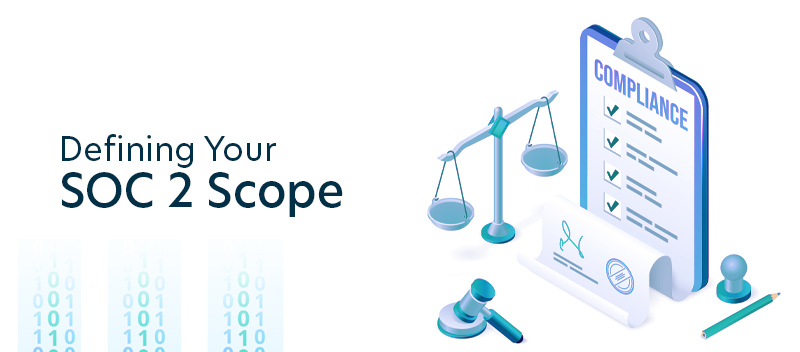
SOC 2, or Systems and Organization Controls 2, is a framework designed to help businesses manage customer data based on the five “trust service principles.” SOC 2 compliance is not just a regulatory requirement but a crucial element in building trust with clients and stakeholders. One of the fundamental aspects of SOC 2 compliance is defining your SOC 2 scope. This involves determining which systems, processes, and data are covered by the SOC 2 audit. In this comprehensive guide, we will explore the importance of defining a clear and accurate SOC 2 scope. By doing so, you can streamline your audit process, reduce risks, and ultimately achieve lasting compliance success. Understanding SOC 2 Scope SOC 2 Compliance adheres to the guidelines for handling client data published by the American Institute of Certified Public Accountants (AICPA). This management is evaluated based on five Trust Services Criteria. SOC 2 Compliance is built around the five “trust services principles,” namely security, availability, processing integrity, confidentiality, and privacy. Security. Information and systems are protected against unauthorized access, unauthorized disclosure of information, and damage to systems that could compromise the availability, integrity, confidentiality, and privacy of information or systems and affect the entity’s ability to achieve its objectives. Security refers to the protection of i. information during its collection or creation, use, processing, transmission, and storage, and ii. systems that use electronic information to process, transmit or transfer, and store information to enable the entity to meet its objectives. Controls over security prevent or detect the breakdown and circumvention of segregation of duties, system failure, incorrect processing, theft or other unauthorized removal of information or system resources, misuse of software, and improper access to or use of, alteration, destruction, or disclosure of information. Availability. Information and systems are available for operation and use to meet the entity’s objectives. Processing Integrity. System processing is complete, valid, accurate, timely, and authorized to meet the entity’s objectives. Confidentiality. Information designated as confidential is protected to meet the entity’s objectives. Confidentiality addresses the entity’s ability to protect information designated as confidential from its collection or creation through its final disposition and removal from the entity’s control in accordance with management’s objectives. Privacy. Personal information is collected, used, retained, disclosed, and disposed of to meet the entity’s objectives. The Impact on the Audit Process and Report The scope of your SOC 2 audit directly influences the audit process and the resulting report. A well-defined scope ensures: Comprehensive Coverage: All relevant systems and processes are examined, leaving no critical areas unchecked. Focused Audit: Auditors can concentrate on specific areas, making the audit more efficient and effective. Risk Mitigation: Identifying and including all relevant areas helps in addressing potential risks proactively. Clear Reporting: The final SOC 2 report will provide a detailed assessment of the scoped areas, offering valuable insights into your organization’s compliance status. By meticulously defining your SOC 2 scope, you not only streamline the audit process but also enhance the robustness of your data security and privacy measures, fostering greater trust with clients and stakeholders. For more on our SOC 2 compliance services, Click Here Factors to Consider When Defining SOC 2 Scope Understanding these factors can help ensure that your scope is both comprehensive and manageable, aligning seamlessly with your organizational goals. Key Influencing Factors When determining your SOC 2 scope, consider the following aspects: Business Operations: Assess which systems and processes are critical to your business operations. This includes IT infrastructure, data processing activities, and service delivery mechanisms. Customer Requirements: Many customers have specific compliance expectations. Understanding and incorporating these requirements into your SOC 2 scope can enhance customer trust and satisfaction. Regulatory Obligations: Different industries are subject to various regulatory standards. Ensure your SOC 2 scope accounts for all relevant legal and regulatory requirements to avoid non-compliance issues. Aligning Scope with Organizational Goals It is crucial that the SOC 2 scope aligns with your broader organizational goals. Consider the following: Strategic Objectives: Ensure that the systems and processes included in your SOC 2 scope support your long-term business strategy. Risk Management: Incorporate key risk areas identified by your organization’s risk management framework to ensure that potential vulnerabilities are addressed. Operational Efficiency: A well-aligned SOC 2 scope can help streamline operations, reduce redundancies, and improve overall efficiency. Balancing Comprehensive Coverage with Manageable Scope Striking the right balance between comprehensive coverage and a manageable scope is essential for a successful SOC 2 audit: Prioritize Critical Areas: Focus on the most critical systems and processes first, then expand the scope as needed. Incremental Approach: Start with a narrower scope and gradually include additional areas in subsequent audits. This phased approach allows for more manageable and focused audits. Resource Allocation: Assess your available resources, including time, budget, and personnel. Ensure the scope is realistic given these constraints to avoid overextending your capabilities. Steps to Define Your SOC 2 Scope Defining your SOC 2 scope is a critical task that requires careful planning and a thorough understanding of your systems and processes. Below is a step-by-step guide to help you navigate this process effectively. Step One: Select Relevant Trust Services Criteria (TSC) The first crucial step in defining your SOC 2 scope is selecting the relevant Trust Services Criteria (TSC) that apply to your specific business operations and industry. Think of this as choosing the key players for your team. Step Two: Identify Services Included in the Scope One of the foundational tasks in preparing for a SOC 2 audit is specifying which services will be included in the audit scope. This includes any service that interacts with sensitive data, from collection and storage to processing and transmission. For instance, if your organization provides services such as cloud computing, managed IT services, or data hosting, these must be included in the scope. It’s essential to demonstrate how these services comply with the relevant TSCs. Step Three: Incorporate Policies, Procedures, Systems, and Personnel A comprehensive SOC 2 scope must encompass all relevant policies, procedures, systems, and personnel involved

